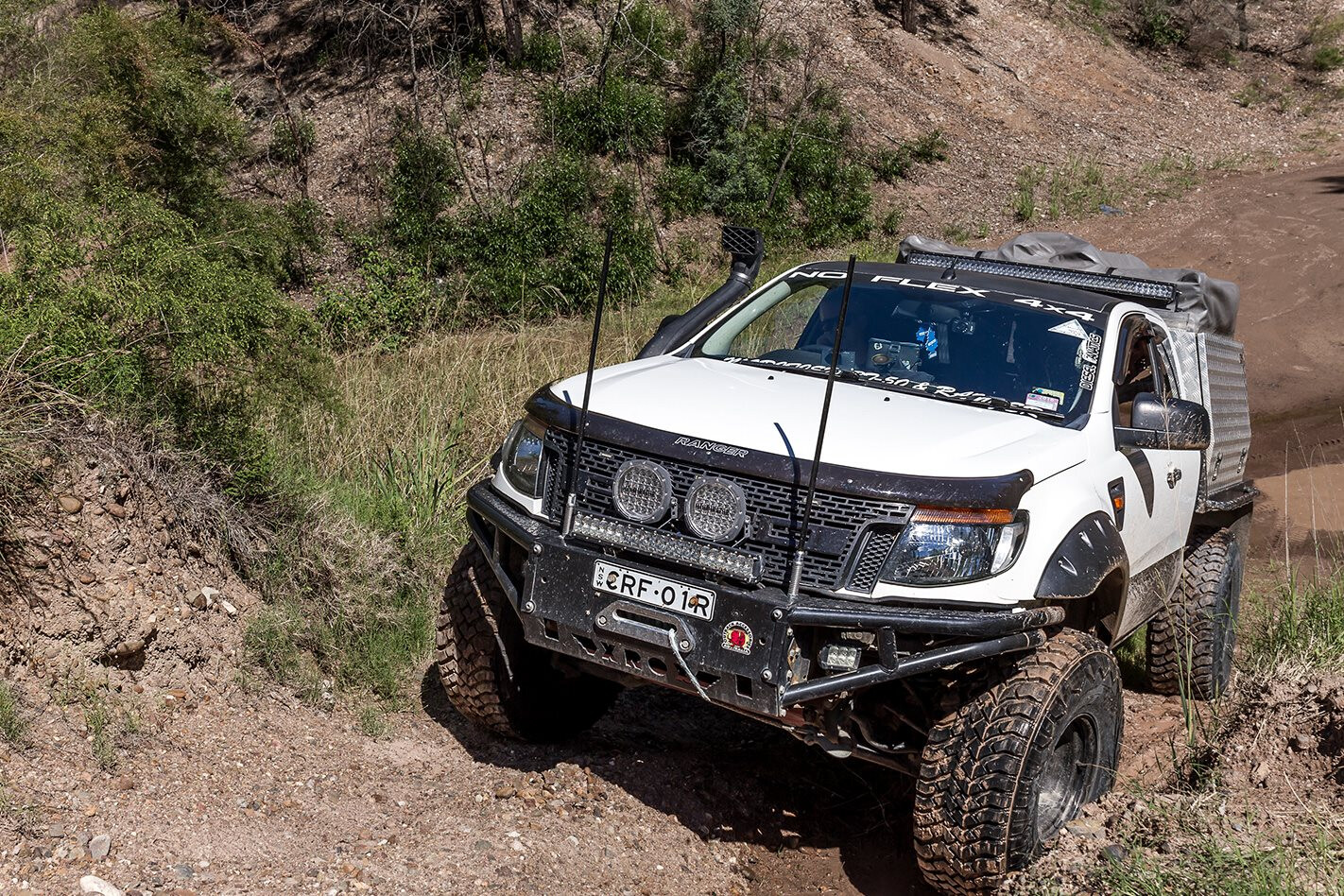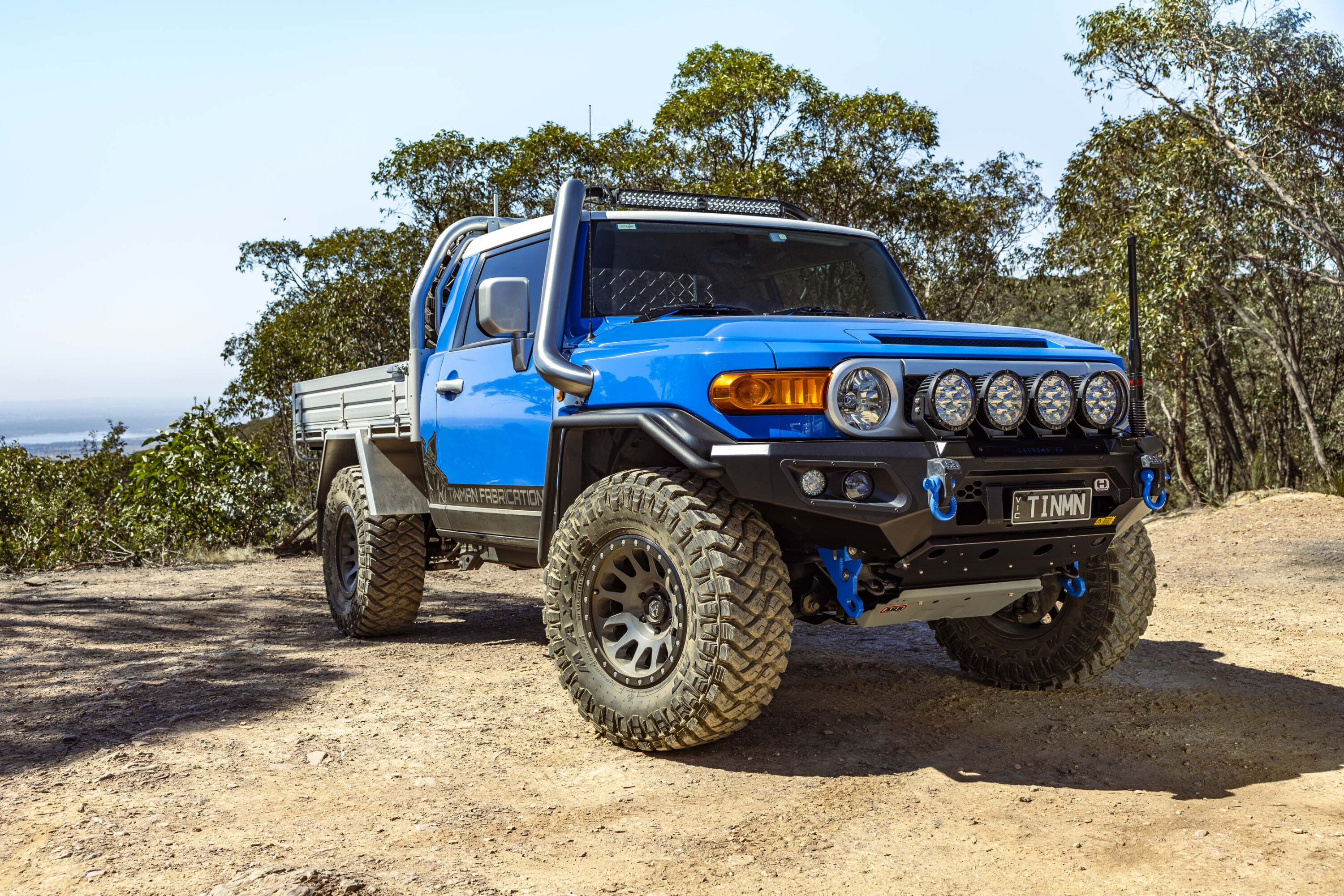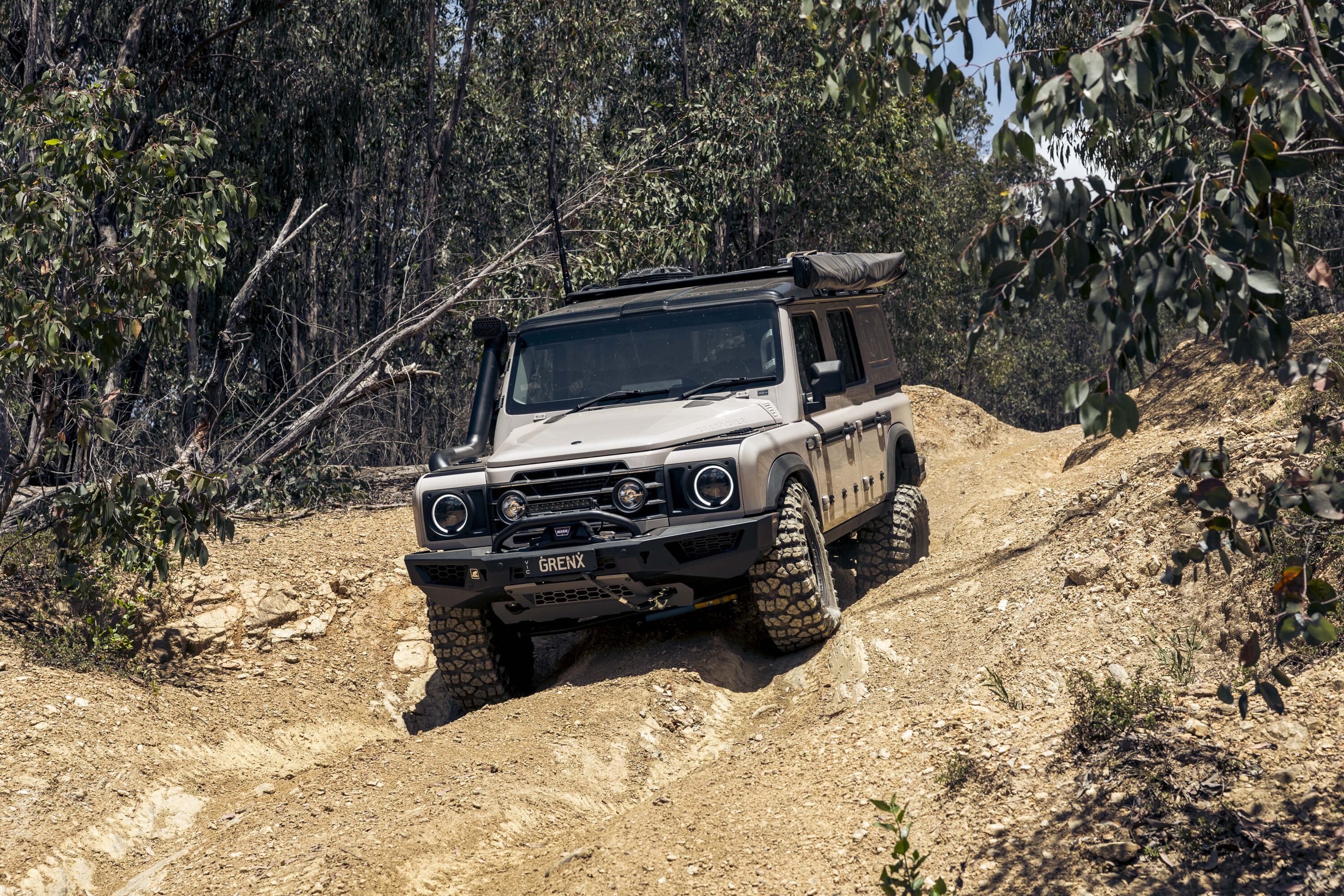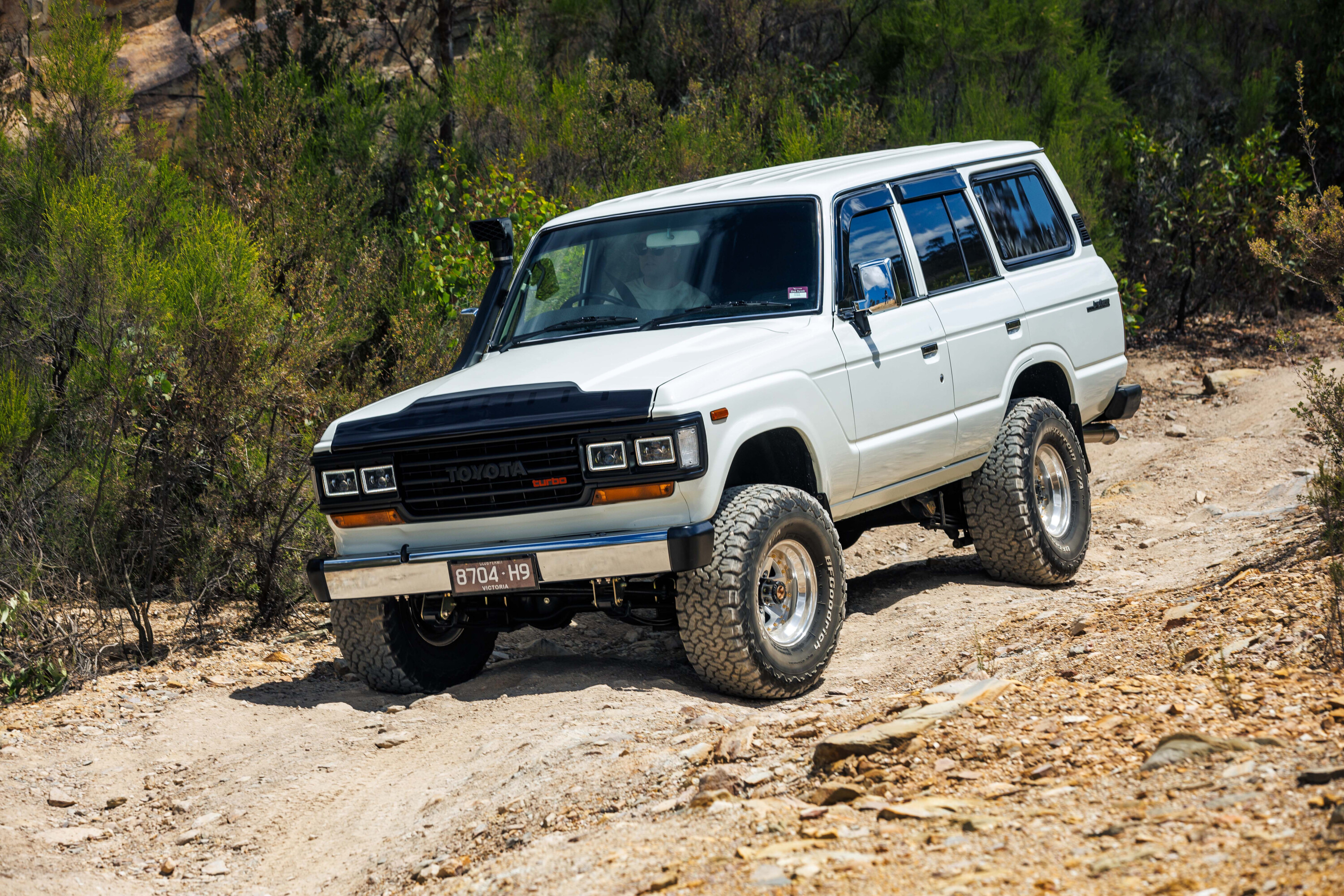FOR SOME people, building a 4×4 is half the fun. Spending months on end agonising over which shock they should use with what spring. What size tyres they should run and how much offset in the wheels. What style bar work and if it’ll colour-match the flares or the body.
For more pics check out the gallery below
Before they realise it they’ve owned their new 4×4 for 12 months or more with barely more than a few adventures down fire trails to show for it. Then there are the others; the sane people who want a built 4×4 because built 4x4s are a key component to getting out and hitting tracks. They’re a special breed of 4×4 owners who spend more time beach camping and low-range crawling with their mates than tightening bolts in the garage. And while I sadly don’t belong to that group, Sam Hill and his tough-as-nails PX extra-cab Ford Ranger sure do.
Growing up on the NSW mid-north coast hinterland, Sam’s no stranger to 4x4s or getting lost in the backwoods. He has had both extremes, with a live-axle GQ Patrol and an IFS D22 Navara both finding their place in his stable over the last few years. But when some nimble-handed low-life decided the appeal of a turbocharged TD42 Patrol was too good not to grab out the lock-picking tools, Sam was left on the hunt for a new rig that’d get him out exploring.
“I had to get a new truck and really wanted a ute,” he told us. “I was looking at solid-axle ones like ’Cruisers and Patrols, but a few mates have smaller D-MAXs and are happy with theirs. I liked the look of the Rangers and this one popped up, so it was just good timing.”
Sam’s new ride came equipped with all the bells and whistles when he took the keys, and the foundation was perfect to build a capable 4×4 from the get go. The extra-cab design means there’s less sheetmetal to damage, and it retains plenty of lockable storage room with easy access from the suicide rear doors.
The tip of the spear in any 4×4 build is always the front bar. It instantly tells you how the vehicle is modified and for what purpose it’s designed. With that in mind, and knowing Sam’s uses, it’s no surprise to find the front of the Ranger adorned with a competition-style tube bar from Xrox that forgoes the sometimes over-the-top protection of a posted bullbar in exchange for less weight on the front suspension and a dramatically improved departure angle. Of course, it’s not all alone up front. Snugged inside is a now-defunct Tigerz11 Grande Mk1 12V winch wrapped in synthetic rope.
There’s a 22in budget LED light bar above, with twin 7in Illuminator spotlights throwing their weight around for a bit of distance. Multiple LED spotlights light up the track on either side as well as underneath, for key wheel placement when a night rock-crawling session is in order.
Down the flanks there’s a huge set of 5in-wider bolt-on flares from Kut Snake 4×4, helping contain the massive 15x10in -44 offset wheels. With the stock rims being seven inches wide and +55 offset, the new units are sitting close to 14cm further outside the body than the factory offerings. Making the most of the huge offset are a set of Hankook Dynapro MTs, punching in at 35×12.5R15 in the old language, or around 315/80R15 if you prefer your tyre sizes to be in riddles.
Of course, you’ve got Buckley’s chance of getting a tyre and wheel package like that on a standard Ranger, so it shouldn’t come as a shock to find Sam’s Ranger has a serious altitude adjustment to get things where they need to be.
The front is now sitting three inches higher with a set of struts from Dobinsons. They’re fully adjustable, allowing the ride height to be dialled in to suit the weight of accessories but also run an external reservoir for extra fluid capacity to help resist shock fade in corrugations or rough terrain. The rear has a matching 3in altitude adjustment with un-named springs and a set of budget shocks – hey, buying a previously modified 4×4 isn’t always a walk in the park.
Down back and the versatility of a flat tray becomes quickly apparent. Replacing the vulnerable sheetmetal is a heavy duty steel tray, with rock rails keeping stray objects away from the more sensitive parts and providing a mounting point for the “it’s all legal officer” rubber mudflaps. To keep weight down, the tray’s flooring is aluminium checkerplate, as are the two huge tool boxes down each flank. The passenger side box has a set of pull-out drawers and stores all of Sam’s camping kit, while the driver’s box houses spare parts, tools and the brains of the electrical system.
Tucked inside a third smaller tool box between the two large boxes is an Exide heavy-duty battery kept charged up by a basic Redarc system. From here it feeds into a distribution panel in the driver’s box that runs the Thumper air compressor, 12v shower, 300W invertor and camp lights on either side. Up top there’s a no-name roof-top tent, with a 52in curved LED light bar in front.
From the captain’s chair Sam rows through all six factory gears with the 3.2L five-cylinder diesel in stock form for now, but has plenty of 12V gadgetry to keep him entertained. Next to the gear shifter is a 5W UHF058 unit from the guys at Oricom, which is fed by the bullbar-mounted aerial up front; the second aerial feeds into a Bury cradle to significantly boost mobile phone signal.
There’s a pair of digital gauges from Max Speed Racing (from Japan) for Exhaust Gas Temperatures and boost levels, with an Xgody GPS unit and a second TFT screen hooked up to the reverse camera in the back.
While there’s inherent danger in buying any previously modified 4×4, Sam’s got a hell of a head start and a solid plan for the Ranger while he’s its custodian.
“All my future plans at the moment are just to get out there and use the thing,” he told us. “I’ll find things that worked for the previous owner that won’t work for me, and only time will uncover those. Things might change when I get used to it, but for now I just need to get out there with it.”
BUYING SECOND HAND?
IT CAN be incredibly tempting buying a second-hand vehicle with all the fruit and, as Sam found out, the benefits aren’t always financial, with him saving himself countless hours working on a stock one just to get it up to speed. But there are a few things to keep in mind.
Like any second-hand vehicle, the history and condition are far more important than the amount of kays or the accessories fitted. A $5000 suspension kit won’t look so appealing if the engine has never been serviced. Where possible, log-book services are always a good indicator the vehicle has been looked after, but aren’t an excuse to not look at the general condition of the vehicle.
Has rust been allowed to develop underneath, are there scrapes and dents, perished rubber components underneath, or maintenance issues that should have been rectified? They’re often an indicator not just of the current condition of the vehicle, but how the owner has treated it throughout its life.
Likewise, if the components fitted are of high quality rather than eBay specials, things have been kept legal (or at least engineered), and there’s a thorough service history, it’s a good indicator the vehicle has not only been looked after but built with a goal in mind with every component working towards it – not just a bunch of gear found cheap online.





